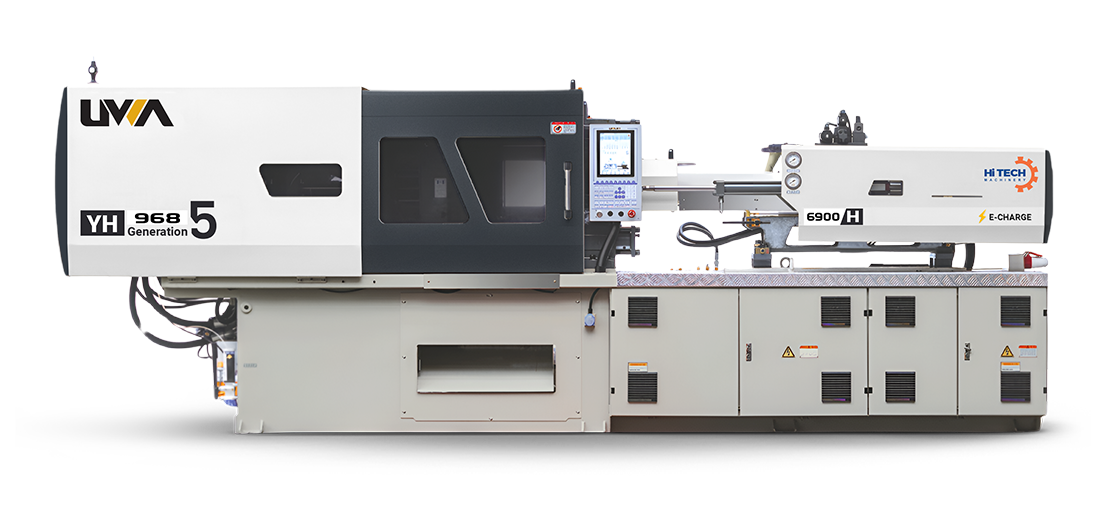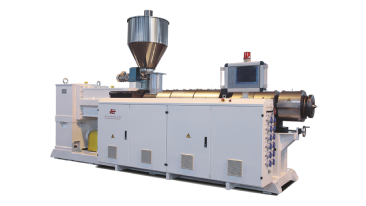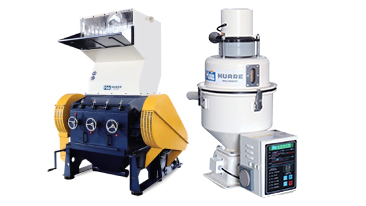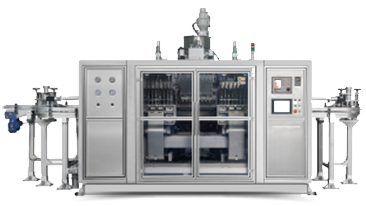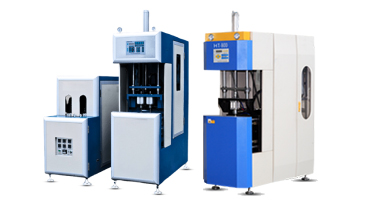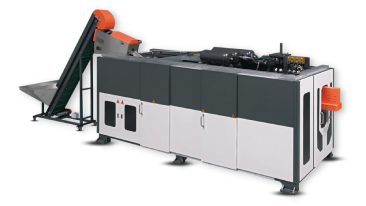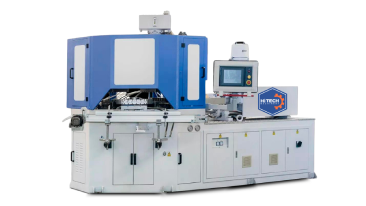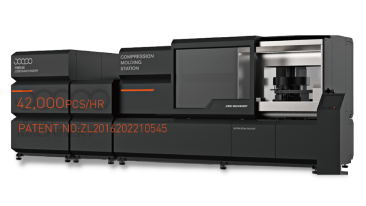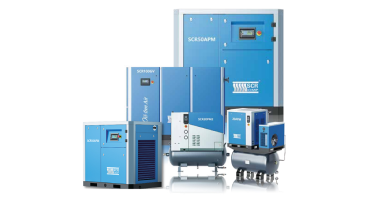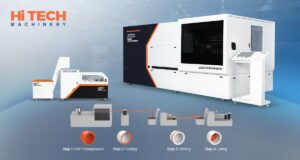The product market options in the plastic industry are huge, and one often gets confused about which category or product to invest in.
We have covered multiple such potential business options in separate posts, like paint buckets, cable ties, and dental floss. However, this post focuses on a very trendy and interesting product in the packaging industry – the plastic cap. It’s a small-sized product, but its profit potential is often underrated.
Read through this blog to explore how you can start a plastic bottle cap manufacturing business, what returns to expect, and how HiTech Machinery helps you build a modern setup.
Market Size of Bottle Caps
Bottle caps are a part of the larger packaging industry, specifically under the caps and closures segment. According to a report by the IMARC Group, the global market volume stands at around 50.2 billion units. The Asia-Pacific region dominates this market, driven by its densely populated countries and the rapidly growing FMCG sector.
In local markets, we have data for Pakistan and the UAE. In Pakistan, production figures are reported in tons, with approximately 7.82 million tons of caps expected to be produced in 2025. Meanwhile, the UAE plastic cap market is estimated at around $ 910 million.
Why Plastic Caps are a Smart Investment?
So, we’ve already established that plastic caps are an investible product. But beyond the market size, what makes them such a lucrative choice for investors?
1. High Demand, Evergreen Product
Plastic caps are needed across multiple industries, including beverages, bottled water, carbonated soft drinks (CSDs), juices, edible oils, pharmaceuticals, and cosmetics. Their consistent consumption and the rise in packaged products make them an evergreen and recession-resistant product.
2. Strong Reliance on Imports
In many developing markets, such as Pakistan, despite huge local demand, there is still a significant import volume of caps and closures worth millions of dollars. This import dependency creates a strong opportunity for local manufacturing to earn better margins.
3. High-Volume, High-Profit Product
With modern cap compression molding machines, manufacturers can produce over 50,000 caps per hour, which means nearly a million caps per day. Such high output, combined with low per-unit production costs, ensures healthy profit margins.
4. Low Manpower Requirement
The manufacturing system is largely automated. Once raw material feeding is set up, caps move through conveyors and ejectors automatically, without manual handling.
How Plastic Bottle Caps are Made?
Plastic bottle caps can be made using either of the two plastic processing methods: injection molding and compression molding.
Injection Molding Process
Injection molding has been around for decades and is still widely used today. In this method, molten plastic is injected into a multi-cavity mold under high pressure. Once the material cools and solidifies, the mold opens and the caps are ejected.
With high-speed machines and multi-cavity molds, it can achieve good production rates. However, compared to the alternative method, cap compression molding, the overall output is usually lower, and the process requires more handling and automation support to achieve similar efficiency.
Cap Compression Molding Process
This is a dedicated process for making caps and closures. First, the plastic is extruded into small pellets, which are then fed into a rotary compression molding machine. Each mold cavity compresses the material into a cap shape under controlled pressure and temperature. The process is faster and more energy-efficient, producing thousands of caps per hour with consistent quality.
Cap compression molding is preferred because the machinery often comes with built-in automation for post-processing, including folding, slitting, and lining. These steps, which would normally require separate machines or manual work in injection molding.
Machinery Required for Making Caps
Depending on the process you choose, you can either go for an injection molding setup with auxiliaries or a cap compression molding setup with auxiliaries.
1. Cap Compression Molding Machine
This machine uses compression molding technology to mass-produce caps of high quality with minimal scrap. Its rotary design continuously feeds metered plastic pellets, compresses them under controlled heat and pressure into multi-cavity molds, and ejects the finished caps.
2. Cap Folding, Slitting, and Lining Machines
These machines are connected directly to the compression molding line for post-processing.
- The Folding Machine creates a fold in the band.
- The Slitting Machine makes small cuts in the folded area, forming weak points that let the consumer easily break the seal when opening the bottle for the first.
- The Cap Lining Machine is optional but essential for beverages, edible oils, and pharmaceutical caps.
3. Auxiliary Machinery
A few auxiliary machines are also required for smooth operation and quality control:
- A hopper dryer to remove moisture from raw plastic pellets before processing.
- A chiller is used to maintain the correct mold temperature and remove heat from the molding process.
- An air compressor and air dryer to supply clean, dry air for the pneumatic systems used in slitting and folding machines.
Production Estimates
Production output mainly depends on the number of mold cavities installed in the machine. Currently, different options are available at HiTech Machinery, and new models will be introduced very soon.
Some of the options, along with their respective production capacities, are listed below:
- 24 Cavity: 24,000 to 28,000 caps per hour
- 36 Cavity: 36,000 to 42,000 caps per hour
- 48 Cavity: 48,000 to 56,000 caps per hour (Launching Soon)
These capacities may vary slightly based on the cap size and weight.
Cost of Making and Selling
The cost of making plastic caps isn’t fixed because it depends mainly on two variable factors: material price and electricity cost, which vary from region to region.
However, we can make the calculation easier with a simple example. Around 80 to 90% of the total cap cost comes from raw material. Let’s assume an average cap weighs 1.7 grams, and the cost of HDPE is around PKR 430 (USD 1.5) per kg. So, the material cost per cap comes to roughly PKR 0.73 (USD 0.0025).
Now, for electricity: let’s take the example of a 24-cavity cap compression machine that produces about 24,000 caps per hour and consumes around 26 kW of power. If the electricity cost is PKR 60 (USD 0.21) per kWh, then the electricity cost per cap would be PKR 0.065 (USD 0.0002).
So, when you add up both material and electricity, the total production cost per cap comes close to PKR 0.80 to 0.85.
As per market data, caps are usually sold in bulk packages of thousands, with an average profit margin of 10% to 20%. Although the margin per piece looks small, the high production volume makes cap manufacturing a very profitable and scalable business.
ROI
Based on the above calculations and insights from existing setups, a conservative estimate suggests that the total investment for a complete cap compression setup, approximately 65 million PKR (around USD 230,000), can be recovered within 18 to 24 months of regular production.
How HiTech Machinery Helps in Cap Manufacturing?
So, if you’re interested in setting up a plastic cap manufacturing business, or any other plastic product line, you can reach out to HiTech Machinery. We don’t just supply the machines; we provide a complete turnkey solution, from installation and commissioning to training and after-sales support.
Here’s what you can expect when you work with HiTech Machinery:
-
- Local Warranty
- After-Sales Service
- Spare Parts Availability
Get in touch with HiTech today to discuss your project and start building your plastic cap manufacturing business the smart way.

